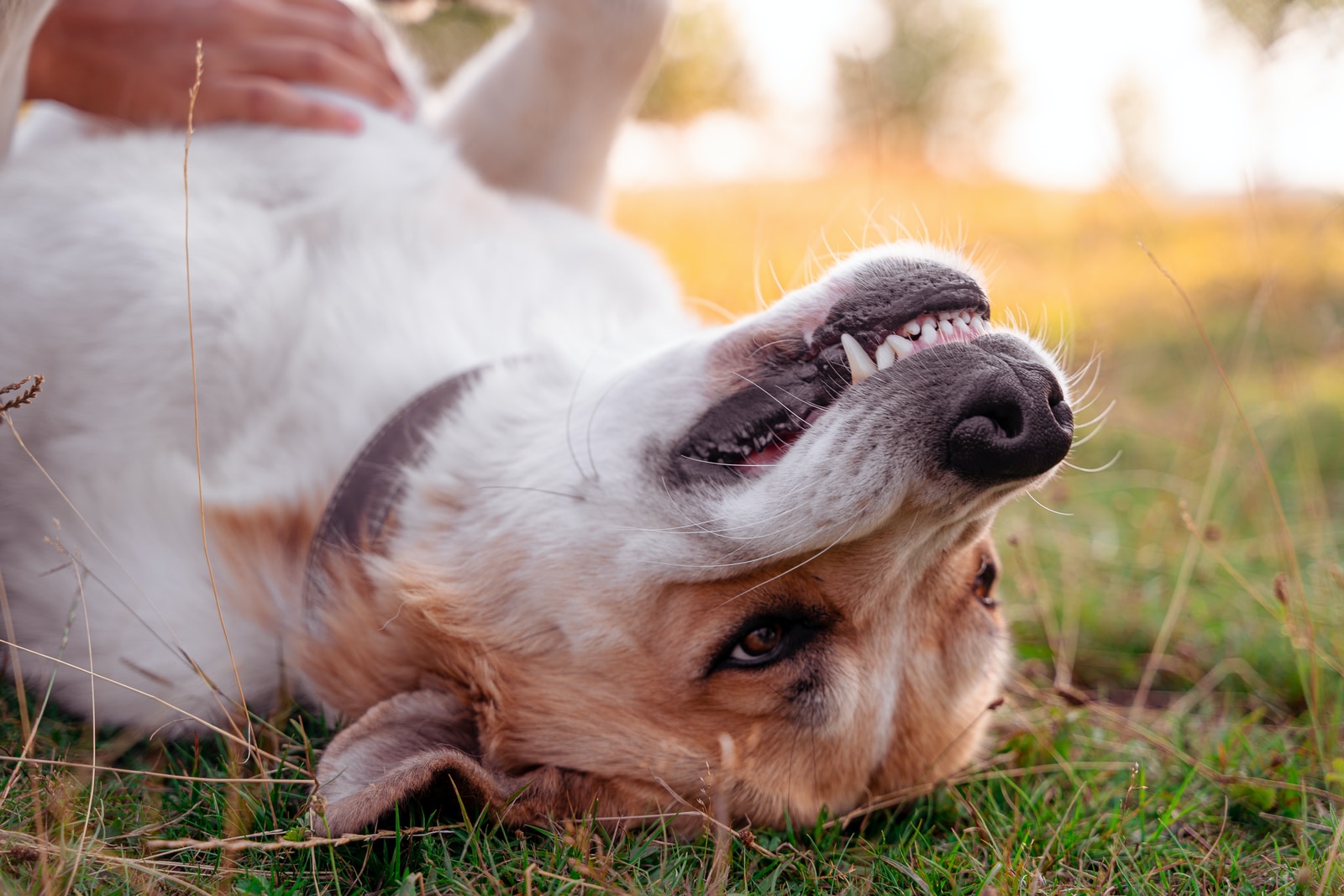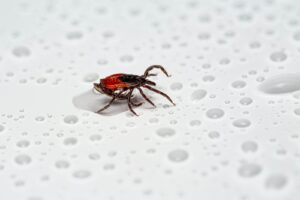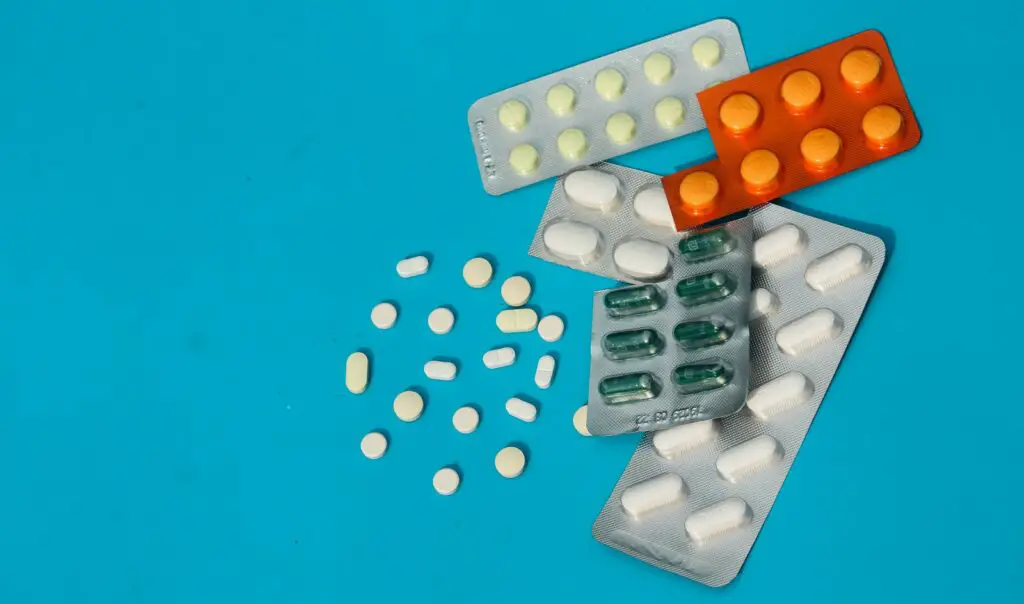
Key points
- Dog rashes are most commonly caused by bacterial and fungal infections. Other causes of canine rashes can include allergies, parasites, hormone imbalance, and genetics;
- Depending on the underlying cause of the condition, treatment for rashes will vary from hydrocortisone cream and antifungal shampoos to antibiotics and surgery;
- The most popular home remedies for canine rashes are apple cider vinegar spray, oatmeal bath, Epsom salt baths, vitamin E, and coconut oil;
Just like humans, dogs can sometimes be prone to skin problems. Rashes can appear anywhere on the pet’s body, with the tummy being the most vulnerable body part. Although a rash on the dog’s belly may seem alarming to you, these conditions are quite common. However, a simple rash can turn into a dangerous skin infection, so starting treatment as soon as you discover that your furry friend has a rash is recommended.
Table of Contents
Causes of Dog Belly Rashes
Rashes in dogs can have several different causes. They may be caused by a fungal or bacterial infection on the canine’s skin. Sometimes, rashes also result from allergies or parasite infestations.
It is essential to visit your pet’s vet to determine the exact cause of your dog’s rash. After a careful examination, the doctor will determine what triggered the condition and prescribe appropriate treatment.
Here are some of the most common reasons why your dog may have a rash on its stomach:
Bacterial infection
The medical term for bacterial skin infections is pyoderma. Pyoderma usually results in crusty, dry, flaky skin and causes lesions that resemble pimples. Hair loss and itchiness are also common symptoms of this condition.
In most cases, bacterial skin inflammation in dogs is caused by a Staphylococcus infection. This form of skin infection is not dangerous for humans. So you don’t need to worry about catching the disease from your dog.

Canines can also get pyoderma due to skin trauma such as abrasions or cuts, excessive presence of moisture on the skin, or a secondary condition.
If your dog has a rash caused by bacteria, only the skin on its torso will be affected. However, the condition can also affect other body parts, such as the elbows and paws.
Dogs suffering from bacterial skin infection often display the following symptoms:
- Purulent and reddened skin
- Hair loss
- Itching
- Yellow pustules on the skin
Fungal infection
Oftentimes, skin problems such as rashes are caused by fungi and not by bacteria. Fungal skin infections in dogs are most often caused by fungi of the Trichophyton or Microsporum genera. The condition usually begins on the pet’s legs and head. However, if left untreated, it quickly spreads to the entire body.
Another common fungal infection is yeast dermatitis (also known as Malassezia dermatitis), caused by the fungus Malassezia pachydermatis.
And if your dog has red and scabbed circular lesions on its skin, they are most likely caused by ringworm, another type of fungal skin infection. Although these rashes are usually not itchy, they can get inflamed over time.
It is important to note that humans can catch fungal infections from their canines. Therefore, you need to wash your hands thoroughly after administering treatment to the pet. In addition, if you have children or other pets, you should limit their contact with the sick animal until the condition is cured.
Here are some other symptoms of fungal skin infections:
- Circular hair loss
- Dry and thickened skin
- Changes in skin pigmentation
- Rash that initially starts only on the pet’s legs and head
- Musty smell
- Chronic ear infections
- If left untreated, the rash begins to spread to the entire body
Allergies

Allergies can also lead to rashes on a dog’s belly. It is estimated that one in five dogs has an allergy. Any allergy is simply an overreaction of the immune system, which classifies a harmless substance found in the environment or food as dangerous and tries to fight it. Your pet can get itchy bumps, pimples, and rashes due to allergies. This can be caused by contact dermatitis or reactions to fertilizer, pollen, dust, cleaning products, or other irritants, food allergies, flea allergy dermatitis, and food intolerance.
If your pet has an itchy rash, it will scratch its skin, resulting in an open wound, introduce harmful bacteria into the skin, and exacerbate the condition. In addition to rashes and severe itching, allergies can also cause symptoms such as indigestion and ear infections.
The following symptoms can accompany a skin infection caused by allergies:
- Digestive upset
- Itchiness
- Hair loss
- Redness
- Irritation
- Chronic skin infections
Pests and parasites

Another possible cause of skin inflammation and rash on puppies’ bellies is a parasite or pest infestation. Fleas, ticks, or mites can cause rashes on your dog’s skin by exposing it to bacterial, yeast, and fungal infections. Cheyletiella mites, Demodex mites, and Sarcoptes scabiei mites often found in dogs are notorious for causing intense skin irritation on the dog’s stomach and groin area. Sarcoptic mange, which leads to particularly severe itching and rashes, is also caused by mites.
In addition to rashes, here are other symptoms that can occur if your pet is suffering from a parasite infestation:
- Hair loss
- Itching
- Crusty skin on some body parts
- Rashes on the dog’s abdomen, chest, ears, and front legs
Hormone imbalance
If your dog has a rash on the belly, it could also be a sign of an underlying condition, such as hypothyroidism (reduced thyroid gland function) or Cushing’s disease (overactive adrenal gland). These conditions are responsible for hormonal imbalance in dogs.
The first apparent symptoms of these conditions include:
- Thinning coat or bald spots on the dog’s skin
- Changes to the dog’s skin quality
- Hair loss
- Changes in drinking and urination habits
Heat rash
When your dog becomes overheated, it can develop a rash on its belly. The skin will also become red, itchy, and tender to the touch. Additionally, pimples and boils may develop on the pet’s skin.
Genetics
Dog breeds such as Golden Retrievers, Cocker Spaniels, German Shepherds, Bulldogs, and Doberman Pinschers are genetically predisposed to developing skin problems. Therefore, they are more likely to get stomach rashes.
Diagnosing a Dog’s Rash
Although a rash on a dog’s belly is easy to notice, it might be quite challenging to pinpoint its underlying cause. Thus, you should consult your veterinarian before giving your pet any medications. The specialist will perform a physical examination and order the following diagnostic tests:
- Bloodwork
- Skin sample
- Skin culture for bacteria and fungi
- Antibiotic sensitivity tests
- Allergy testing
Of course, you won’t need all of these tests if, for instance, your dog just got stung by a bee, since you will know for sure that the rash on its stomach is caused by the sting. However, even in this case, it is recommended to call a professional.
How to Treat a Rash on a Dog’s Stomach?
There is no doubt that treatment for a belly rash has to be chosen based on the initial cause of the rash. In some cases, for example, if your pet has a heat rash, an oatmeal bath and a few applications of hydrocortisone cream will be enough to clear up the condition.
Bacteria
When treating a bacterial skin infection in dogs, shaving the pet’s fur in the affected areas and washing your four-legged friend with an antibiotic shampoo is usually necessary. Once the pet is fully dry, you can treat its rash with an antibiotic ointment prescribed by your veterinarian. The infection will usually clear up in a few days if you use the prescribed antibiotics as directed by your veterinarian. However, in rare cases, surgery may be required to cure the condition.
Fungi
If the infection is caused by fungi, you will also need to shave the affected areas. Washing your pet with a special antifungal shampoo will kill the fungi on the skin and gradually make your dog’s rash disappear.
Parasites

If your pet is suffering from ticks, it’s crucial to remove them quickly from your pet’s body, as ticks often spread dangerous illnesses such as Lyme disease. You can use shampoos, powders, sprays, and collars to kill fleas and ticks. If your dog has ear mites, it is best to have them removed by a veterinarian. You will need to trim the pet’s hair in the areas affected by the rash and then clean the skin with a disinfecting solution.
Allergies
If your pet’s rash is caused by an allergic reaction, the vet will select treatment depending on the cause of the allergy. Common allergy causes include flea bites and different foods. Ensuring that your pet is no longer in contact with the allergy is often enough to clear up the rash. So you might need to give your pet flea prevention medicine or switch it to different food.

If your dog is suffering from atopic dermatitis, which can be triggered by various substances from the environment and cause an itchy rash in your dog, it can be virtually impossible to eliminate the allergen. In this case, you can use medication to relieve acute symptoms and desensitize the pet to the allergen to bring long-term improvement.
Home Remedies For a Rash on a Dog’s Stomach
It goes without saying that in some cases, you cannot avoid using medication. However, you can supplement drugs prescribed by a vet with home remedies to relieve inflammation and soothe the rash. Here are some of the best natural treatments for rashes in dogs:
Apple cider vinegar

Apple cider vinegar helps protect your pet from fleas and prevents dry skin. It is also effective against fungal and bacterial infections. Diluted apple cider vinegar can be used as a spray or as a conditioner. Alternatively, you can bathe your dog in a water-apple cider vinegar solution.
Epsom salt baths
Epsom salt is known to bring down inflammation and swelling in dogs. If your dog has open wounds from scratching and biting, salt is also effective at healing and cleansing them. You can also replace salt with baking soda.
Oatmeal bath
Oatmeal is often added to soaps and shampoos to soothe the pet’s skin. There are ready-made oatmeal bath products in the stores, but you can also prepare your dog’s bath using regular oatmeal yourself. Try this ingredient if you want to soothe your pet’s itchy skin.
Vitamin E and Coconut Oils
Vitamin E has a trove of healing and soothing properties. It is usually sold in drug stores. Vitamin E can be used topically or as a food supplement. Coconut oil can also be beneficial for your dog’s skin. Try feeding it to your dog regularly to see the result.

Fennel seeds and chamomile tea
Chop up fennel seeds, add 2 tablespoons of ground seeds to cold chamomile tea, and leave to steep overnight. Spray or massage the solution onto the affected area the next day.
Aloe vera gel
Aloe vera gel effectively soothes itching. It can be applied to the skin up to three times a day.
FAQ
What can I put on my dog’s skin rash?
You can try herbal tea sprays. They can effectively relieve inflammation and kill fungi and bacteria that cause rashes in dogs. Another option is to combine water with baking soda in a 1:1 proportion and apply the solution to the affected area.
How can I soothe my dog’s belly rash?
You can try using a shampoo containing colloidal oatmeal. It can reduce skin redness, dryness, and itching in your dog.
Why does my dog have a red rash on his belly?
Some of the most common reasons for rashes on dogs’ stomachs are infections caused by bacteria or fungi. However, parasites such as fleas, mites, and ticks can also cause irritation and, therefore, rashes in pets.





